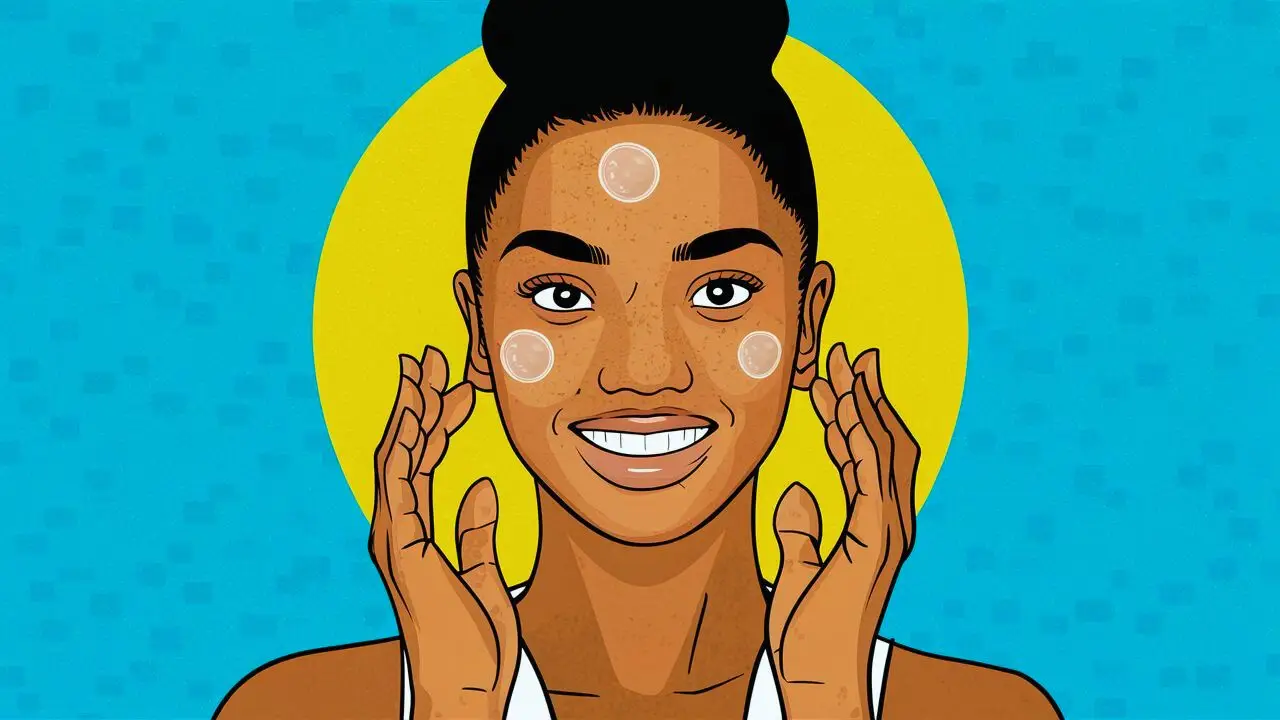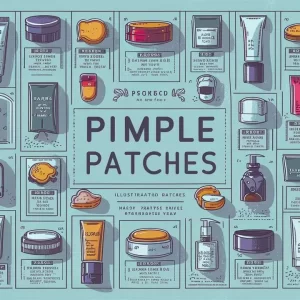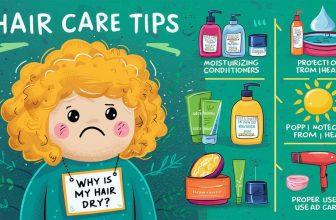How Do Pimple Patches Work? Expert Says

Pimple patches work as a protective cover and accelerate healing. They absorb pus and reduce inflammation, often containing active ingredients like hydrocolloids. Dealing with acne can be daunting, and finding effective treatments is a top priority for many. Enter pimple patches, the small, discreet heroes in the battle against breakouts. These tiny patches have taken the skincare world by storm, offering a simple solution to a complex problem. Pimple patches work to protect blemishes from external bacteria and prevent picking draws out impurities while maintaining the ideal healing environment. Skincare enthusiasts and dermatologists alike have praised the innovation behind these targeted treatments. Not only do they minimize the visibility of pimples, but they also promote faster healing, making them an indispensable tool in the quest for clear skin.
The Rise of Pimple Patches
Blemish battles are taking a turn with the latest skincare superhero: pimple patches. Their discrete charm and fuss-free application have made them a staple in many skincare rituals. Unlike messy creams, these tiny dots adhere to the skin, actively targeting trouble spots without drawing attention.
Popularity In Skincare Routines
More and more individuals are incorporating pimple patches into their skincare regimes. The reasons for their burgeoning popularity are simple:
- Convenience: Easy to apply and remove.
- Protection: Shields from bacteria and picking fingers.
- Effectiveness: Delivers active ingredients directly to the pimple.
Evolution From Traditional Acne Treatments
Pimple patches work is a breakthrough, stepping away from past treatments:
| Traditional Acne Treatments | Pimple Patches |
| Creams that can dry out the entire face | Localized treatment reduces skin stress |
| Difficult to cover up with makeup | Invisible protection that can be worn anytime |
| Slow and uncertain results | Fast-acting and reliable performance |
Transitioning from traditional methods, pimple patches offer a targeted, effective, and discreet solution to acne woes. The evolution is clear as users testify to their spot-reducing prowess.
Anatomy Of a Pimple Patch
Imagine a targeted solution for that stubborn pimple. Rallying an impressive arsenal under a tiny sticker lies the modern marvel known as a pimple patch. Designed to protect, treat, and heal, pimple patches work their magic discreetly and effectively. Let’s peel back the layers to understand their composition and function. 
Key Ingredients
Pimple patches come empowered with active ingredients that make them a formidable foe against acne. Each small circle houses a complex mix of elements tailored for pimple remedy.
- Hydrocolloid – A primary component, acting as a moisture-absorbent material
- Salicylic Acid: renowned for clearing pore congestion
- Tea Tree Oil – Natural oil celebrated for its antibacterial properties
- Hyaluronic Acid – Helps in moisture retention for skin healing
Types Of Pimple Patches
Different patches target various stages and types of pimples. Some draw out impurities while others focus on reducing inflammation.
| Type | Function | When to Use |
| Hydrocolloid | Extracts pus, flattens pimples | Whiteheads |
| Medicated | Delivers active ingredients | Early-stage pimples |
| Microneedle | Penetrates deep delivers ingredients | Developed cystic acne |
The Science Behind the Patch
Pimple patches aren’t just a fad; they’re grounded in science. These tiny but mighty stickers absorb pus and reduce inflammation, making breakouts less noticeable. Let’s dive into the science that makes these patches a go-to for spot treatment.
Hydrocolloid Technology
Hydrocolloid Technology is at the core of most pimple patches. This medical-grade material was originally designed to absorb moisture from wounds. In pimple patches, this means:
- Locking in moisture to protect the area from bacteria.
- Absorbing pus and oil promotes faster healing.
- Creating a moist environment, which helps to prevent scarring.
Hydrocolloid patches turn white as they suck up the gunk from your pimple, providing a visible sign they’re working.
Active Agents in Action
Many pimple patches go beyond hydrocolloids. They contain active ingredients that further combat the pimple. Common agents include:
| Active Agent | Benefit |
| Salicylic Acid | Exfoliates skin and unclogs pores |
| Tea Tree Oil | Known for its antibacterial properties |
| Hydrogen Peroxide | Sanitizes and dries out the pimple |
These agents penetrate the blemish to reduce redness and swelling.
Application Best Practices
Proper application of pimple patches leads to perfect results. Follow these expert-recommended practices for application:
Surface Preparation
Before applying a pimple patch, a clean surface is key. Begin with these steps:
- Apply a mild, non-irritating cleanser on your face.
- Dry the skin using a gentle towel. Don’t rub.
- Ensure the affected area is free of creams or oils.
Timing And Duration for Optimal Results
Patches work differently based on timing and duration. Maximizing effectiveness involves:
- Apply the patch at night before sleep for extended contact time.
- Leave the patch on for at least 6 hours to allow the active ingredients to work.
- Remove the patch gently to avoid irritation to the sensitive skin.
Benefits Of Using Pimple Patches
Pimple patches have stormed the skincare scene with a simple promise: quick, effective acne treatment. Unlike traditional spot treatments, these small, discreet stickers can help attack pimples head-on. Let’s explore the benefits of introducing pimple patches into your skincare regimen.
Promoting Faster Healing
Pimple patches can speed up recovery, providing a protected environment. Ingredients like tea tree oil or salicylic acid are frequently found in them. These ingredients are well known for their ability to boost skin repair. Applying a patch creates a moist atmosphere. This atmosphere allows the active ingredients to work efficiently, reducing the pimple’s lifespan.
Reduced Potential for Scarring
Scarring is a common worry with acne outbreaks. Protecting the blemish from external factors like dirt and your fingers can prevent scarring. Pimple patches offer a barrier between the pimple and the rest of the world. This barrier prevents picking and popping. It encourages healing without leaving behind marks.
Other Advantages of Pimple Patches
- Prevent external bacteria from invading the skin.
- They are inconspicuous and can be worn during the day or night.
- It contains hydrocolloid material that absorbs pus and oil.
- Different sizes are available for various blemish sizes.
- Patches are easy to use, with no mess application.
Comparative Perspectives
Exploring the world of acne treatment unveils a myriad of options. Recent buzz centers on pimple patches. These tiny treatment discs differ greatly from traditional topicals. Let’s dive into how pimple patches stack up against the creams many have relied on for years.
Pimple Patches Vs. Topical Creams
Battling acne means knowing your arsenal. Pimple patches work offer targeted healing. Topical creams spread over broader areas. Which reigns supreme?
| Pimple Patches | Topical Creams |
| Concentrate on individual pimples. | Apply to larger skin zones. |
| It is usually infused with hydrocolloids. | Contains varied active ingredients. |
| Protects spots from external factors. | We are exposed to the environment. |
| May reduce pimple size overnight. | Gradual effects are seen over time. |
Creams battle widespread breakouts. Patches seal and heal a single foe. Your choice should align with your acne’s scope and severity.
When To Choose Pimple Patches
Opting for pimple patches means enlisting a focused fighter in your acne struggle. It’s important to know when they’re most effective.
- Whitehead’s surface: Patches excel.
- Aftermath of pore-purging: Patches protect.
- Urge to pick: Patches prevent touching.
- Need for discreet treatment: Patches blend in.
Reserve patches for poignant pimple problems. They’re not for deep, cystic, or widespread acne.
Real User Experiences
The Real User Experiences section dives into the personal journeys of individuals using pimple patches. These stories provide insight into the effectiveness of a seemingly simple solution for complex skin issues. So, let’s hear directly from those who’ve put pimple patches to the test.
Success Stories
- Jane’s Overnight Fix: “Woke up with a giant zit, applied a patch, and poof! Size reduced by morning!”
- Alex Swears by Them: “I sported a patch at work. Nobody noticed, but the healing was real.”
- Riya’s Routine Addition: “Added patches to my skincare regimen. Breakouts are less frequent and milder.”
Limitations And Caveats
While the success stories paint an optimistic picture, discussing the other side is essential too. Not all experiences are magical. Some users report limited effectiveness depending on the pimple type and skin sensitivity. Patches can work wonders but remember results vary. Now that you’ve read real experiences, you can make an informed decision.
Expert Advice
Pimple patches have stormed the skincare scene, promising quick fixes for the occasional breakout. But what do the experts say about these tiny blemish heroes? Dermatologists weigh in on their efficacy. Offering insights into how these patches work and best practices for incorporating them into your skincare routine.
Dermatologists’ Recommendations
Dermatologists suggest pimple patches can be a potent weapon against acne. These patches use hydrocolloid technology to absorb excess fluid, thereby reducing inflammation and promoting faster healing. They also act as a protective shield, preventing bacteria from exacerbating the blemish.
Key benefits include:
- Reduced redness and swelling
- Faster healing time
- Minimized risk of scarring
- Prevention of picking and touching
For optimal results, apply a patch to a freshly cleansed and dried pimple, pressing gently for a few seconds to ensure adhesion.
Tips For Integrating into Skincare Regimen
Integrating pimple patches into your skincare routine requires consideration of your skin’s specific needs. Use them as part of your nighttime regimen for uninterrupted healing.
Follow these steps:
- Cleanse your skin with a gentle, pH-balanced cleanser.
- Dry your skin using a fresh towel.
- Apply the pimple patch directly to the blemish.
- Continue with the rest of your non-comedogenic skincare products, avoiding the area with the patch.
Remember, pimple patches work best on surfaced pimples. For cystic acne, consult a dermatologist for targeted treatments.
Where Pimple Patches Fit in Modern Skincare
In a world packed with skincare solutions, pimple patches stand out for their spot-treating power. These tiny, discrete stickers target blemishes directly. They offer a focused attack on pimples, absorbing pus and reducing inflammation. This innovation seamlessly integrates into daily routines, pairing with cleansers, toners, and moisturizers to fight acne head-on.
Trends And Innovations
Pimple patches burst onto the beauty scene, hailed for their convenience and effectiveness. They’re embedded with ingredients like salicylic acid and hydrocolloid. This technology draws out impurities and safeguards against bacteria. Hydrocolloid technology, once used for medical wound care, is now a pioneer in acne treatment. Users embrace transparent patches for daytime and thicker varieties for nighttime repair.
- Hydrocolloid material absorbs gunk from pimples
- Transparent designs for invisible daytime use
- Night patches provide intensive care
Future Prospects
Skincare experts anticipate bright futures for pimple patches. Continuous innovation suggests patches with active ingredients that could further expedite healing. Smart patches might emerge, containing sensors to track healing. Bio-engineering could lead to patches that blend perfectly with all skin tones. Pimple patches show promise as a pivotal player in acne care.
- Development of active ingredient-infused patches
- Introduction of smart healing sensors
- Innovations in color-matching technology
Pimple patches mark a breakthrough in skincare technology. Our exploration has shown they deliver targeted treatment and prevent inflammation. Users should follow the patch instructions for best results and consider their specific skin needs. Embrace a clearer complexion by integrating these innovative patches into your routine.
FAQ’s
Can Pimple Patches Reduce Acne?
Yes, pimple patches can help reduce acne by isolating the spot, absorbing exudate, and preventing bacteria from entering, which speeds up healing.
How To Use Pimple Patches Effectively?
To use pimple patches effectively, apply them to clean, dry skin directly over the blemish and leave them on for several hours or overnight.
Do Pimple Patches Work on Cystic Acne?
Pimple patches are most effective on surface-level acne, such as whiteheads, and may not be as effective on deeper, cystic acne.
Are Pimple Patches Suitable for All Skin Types?
Pimple patches are generally safe for all skin types, but those with sensitive skin should look for patches formulated to minimize irritation.






